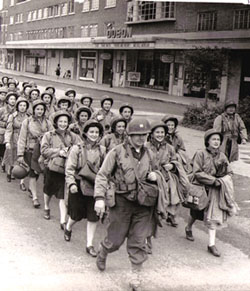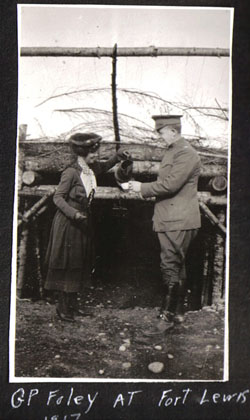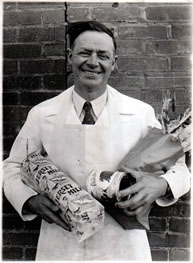
|
|
Community History Helps TINCAN Create a Sense of Place in Spokane, WA
 May Alm's WWII Nurses  VISTA Nora Lollar The Inland Northwest Memories Project (INMP) has an online database archive of oral histories, photos, and other historical materials that makes the region's history easily available—to schools and local citizens especially. Based on the Maine Memory Network website, INMP has powerful search capacities as well as tools for classroom use. Museum and school people who want to become contributing members receive training in cataloging and uploading their materials. Teacher workshops are held for those who want to use local history in their classrooms. The INMP site was developed under a grant from the National Endowment for the Humanities but had been relatively unused until Lollar took over. Under her guidance, the site became a contributing member of the Library of Congress’ Veteran’s project and has expanded into neighborhood history and involved small community museums throughout the rural Inland Northwest.  Mike Bewer Foley 1917 INMP is a critical component of TINCAN’s mission to build community resources in northeastern Washington “…to provide education and support for social, economic, and community development through the use of computer technology and telecommunications. “ That mission is realized through (1) creating online content of value to the local community, (2) developing collaborative training and education with online resources, and 3) collaborating with our region’s Community Technology Centers and other local partners to provide access to digital network technologies to those who might not otherwise be able to benefit from them. As a community network, part of TINCAN’s role is to help give our region’s communities support in defining their identities. TINCAN has helped area students learn about the region’s past and assisted neighborhoods and towns in developing economic development strategies that cohere with neighborhood values and lifestyles. When TINCAN began over eleven years ago, our primary mission was to provide access to computers and the Internet for those who would otherwise not have access due to poverty, minority status, or other disenfranchising circumstances. As access to information technology has grown, TINCAN’s mission shifted to putting those technologies to use to benefit these same communities. TINCAN now provides continuing education for teachers, teen programs, and business development services. Following this trend, the Inland Northwest Memories Project has also become a catalyst for integrating a sense of place across TINCAN programs. In a related project funded by our local community foundation starting this fall, teens from Spokane’s Garland district will collect oral histories and research other historical materials in an after-school program. These materials, once uploaded to INMP, will be the basis for four murals, designed with the assistance of professional artists recruited by an art gallery in the neighborhood. The teens will paint the murals on walls in the Garland Business District as part of their effort to convert the district from a humdrum declining business strip to a vibrant destination arts community. The whole process will be documented by the teens with videos and weblogs in TINCAN’s Virtual Teen Center.  Arnold A. McMullen Lollar’s work has involved students from many area schools and colleges in documenting local history. She coordinated a partnership with Summit School’s 5th through 8th grade students and the Spokane Valley Heritage Museum to collect local history for the new museums first “Founding Visionaries” exhibit. A city-wide project for 2005-2006 grew out of that School’s effort, where TINCAN, Summit, and the Spokane Valley museum will network to move an 1800’s one-room school house to a site on the museum campus. This history gathering effort has the whole K-8 school and community working toward the common goal of collecting and preserving their regional history and enriching their city in the process. This activity has helped the newly incorporated City of Spokane Valley’s find its identity. Lollar also is working with Spokane’s Hillyard Museum, to put their collection online, before they even have a site for the museum in their economically depressed neighborhood. The Hillyard project is closely linked to their neighborhood revitalization as they build on their rich railroad history. TINCAN’s INMP is playing a key role in creating an awareness of where these communities came from and where they are we going. “This sense of 'place' is paramount as local communities make connections to appeal to businesses and people to their area,” said Lollar. Lollar has built a strong base of volunteers for the project that will help it endure, and will bolster TINCAN’s presence as a community network in the region. INMP has been integrated into history classes at two area colleges, Gonzaga University and Whitworth College where students gather local historical materials on the topics being covered each year in the urban and public history classes. Similarly, several high schools have added a collection of historical materials by students into their curriculum. The TINCAN project has collected and preserved literally hundreds of historical treasures that would otherwise be lost. And Lollar states: “…and the best part is we’ve only begun.” 
Hyperlinks references in this article: Comments
|